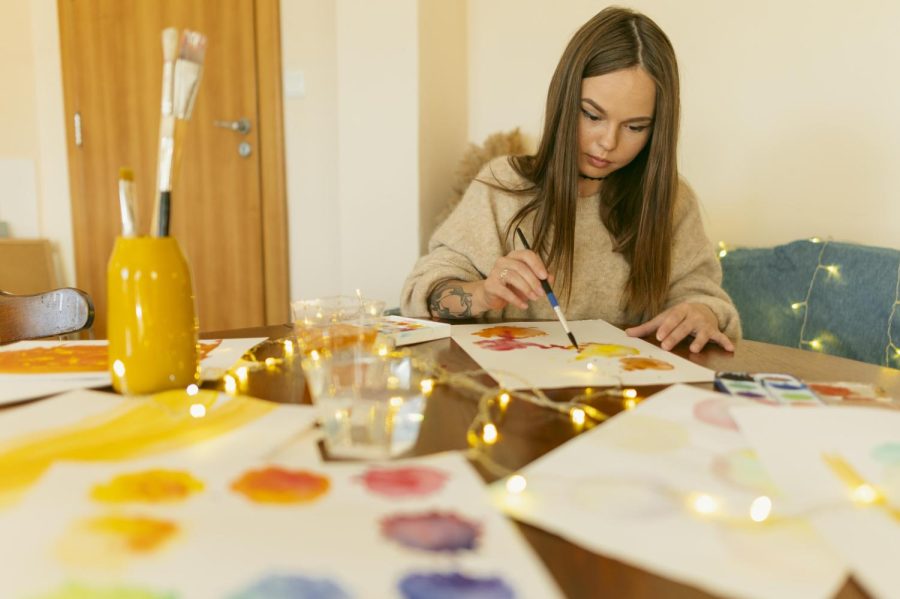Artful thinking
Learn to get lost in the process
March 28, 2023
There’s no singular definition to art. No one can look at any piece, be it film, photography, painting, music or anything else and say “yeah, that’s art” or “no, absolutely not art.” There’s comfort to be found in that the same can be said for people. There is no definition for a person and there is no right way to cope with life and the stresses it may bring. Some people choose to turn to art therapy as a coping mechanism and swear that it’s the best thing that ever happened to them.
Art therapy can sound daunting and perhaps expensive, but there are ways to get lost in the process at home without the added stress of scheduling and finding the right therapist. YouTube, for example, is free and filled to the brim with guided art projects designed for mindfulness and meditation. There are also books, workshops and maybe even the occasional newspaper article to detail simple art processes designed to allow any level artist (novice and pro alike) to get lost in the piece.
One of the most common projects that a quick Google search will reveal starts with any writing utensil and any piece of paper. Yes, that includes the back of an envelope or a bit of blank space on some school notes or old assignments. Simply draw a continuous curved line that intersects itself at various points. From there, add details or color as seen fit. Maybe that means rounding out any corners or adding patterns and color to the created shapes. Maybe that means all of the above or cutting the shapes into a makeshift paper “stained-glass” art piece. There is no right answer and no true end goal as long as the artist has a chance to get lost in the process.
All the potential projects are the same in that there is no ideal finished product. Something as simple as placing drops of oversaturated watercolor paint on a piece of paper and filling in the drops with patterns or more color can be enough. Some experienced artists recommend adding drops of a different color to a still wet watercolor drop in order to watch the colors twist and blend together. The art seems to come to life on the page before drying into something new and unpredictable.
A series of straight and curved lines placed in a particular way can result in an easy three-dimensional art piece that yields the same break from reality. Find an object with an interesting shape (one’s own hand works spectacularly) and trace it lighty with a pencil to provide an interesting base for the lineart.
Next, using a ruler or one’s eye, draw straight lines that stop at the outside of the shape, continuing them on the opposite end. From there, connect the lines with curved lines aiming upward for a convex shape or downward for a concave shape. Continue the process with different colors and/or types of media to eventually leave a flat, but 3D looking image behind.
Using art as a method to recharge or disconnect for a while ultimately is not a substitute for real therapy, but it can be a relaxing pastime that aids in mindfulness and may be a productive way to cope or step away from stressors in life for a moment. Some people recommend setting a timer for an hour or so (or longer) to allow themselves to get lost in the process without worrying about losing track of time. Some suggest writing down your struggles on one side of the paper as a means to pause and accept them before or while drawing. From project to media and every choice in between, this method of relaxation is meant to free the mind for a period of time and allow the person a break from the stresses of daily life.








